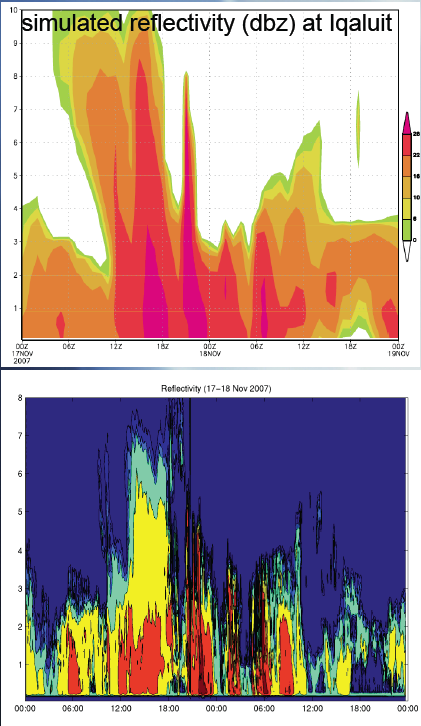Atmospheric modeling has been a central theme within STAR. While most of our observational work has been motivated by a drive to understand atmospheric processes and improve weather models, models can also be used as tools to isolate processes within complex storm systems. Within STAR, the Canadian model GEM-LAM (Global Environmental Multiscale-Limited Area Model) and the WRF (Weather Research and Forecasting) models were used in various applications including the study of strong wind events at Iqaluit, NU and looking at specific storms that passed through the region during STAR. Dr. Jonesí group was focused on analyzing the significant snowstorm event from 16-18 November 2007 over southern Baffin Island, with the goal to understand the evolution of the storm using the STAR observations, Regional Reanalysis (NARR) data and the Weather Research and Forecasting (WRF) model.

Simulated time series of reflectivity profiles over Iqaluit produced by WRF simulation of the November 16-18 2007 snowstorm (top). Actual time series of reflectivity profiles observed at Iqaluit from the STAR-installed portable Doppler radar. The comparison shows the modelís ability to capture the variability in precipitation rates throughout the duration of the storm at Iqaluit but over estimates the amount of precipitation overall.